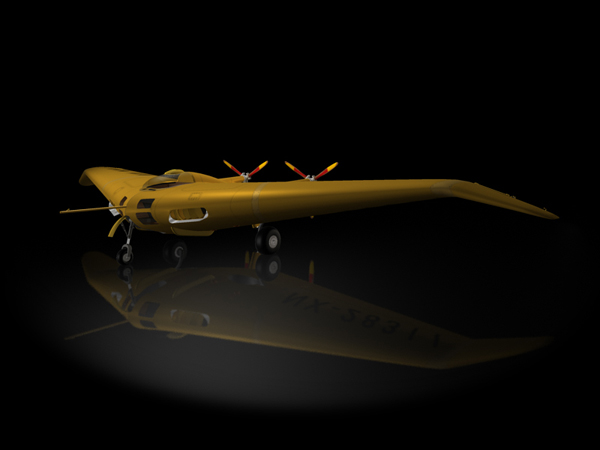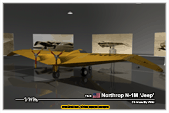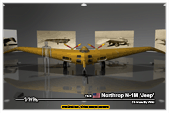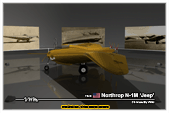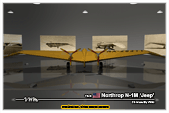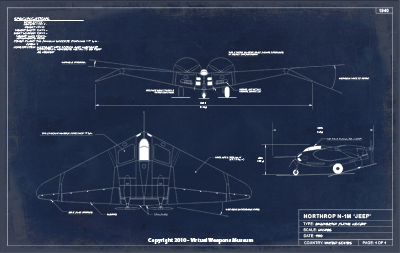Since Northrop would have to fund the N-1M project it had to be cheap
to build but also it had to be versatile enough so it can be reconfigured
in a short period of time by a limited number of personnel. The goal
with the N-1M was ultimately about extracting data that may be invested
on other
more worthwhile projects, which as a result would bring interest from
the government and/or the commercial sector.
The aircraft made of mainly plywood and tubular steel lend it self well
to the Project requirements. This allowed engineers to study different
angles of sweepback, dihedral, and wing droop in any combination. This reconfiguration
element gave the N-1M many different looks throughout its short history
and
this can be seen in the many images taken of the N-1M.
Maneuvering an aircraft of this type had its challenges. Like its European
counterparts controls were accomplished using many of the same techniques.
The elevons could work together to provide pitch while they could also work
opposite of each other to provide roll. The rudder controls were achieved
by a set of split flap arrangement set near the wing tips. These flaps worked
independently from each other and when one set would open up it would produce
drag therefore it forced the aircraft to yaw in the desire direction. These
flaps could also be open together to act as airbrakes, which could help slowing
the aircraft down or help increase gliding angle. The trim flaps were located
between the engine extensions which would assist with landings.
Its maiden flight was actually an “accidental” one as the aircraft
sort of bounced of the desert floor when during fast speed taxi run the aircraft
went over a rough spot. It was discovered during this event that the aircraft
could not climb above five feet. This led to some modifications to the N-1Ms
elevons, which was enough to fix the issue. The aircraft went on to make
over 200 flights.
The marginal success of the N-1M inspired Jack Northrop to submit patented drawings for a flying wing medium bomber, which turns out was an exact copy of the N-1M. Northrop also envisioned a flying wing design that could also be applied commercially as a cargo plane or passenger aircraft.
After Northrop was finished with the N-1M he gave it over to the Army hoping
that it would end up on display somewhere. A few years later the little
aircraft went to Indiana and then from there it was transported in crates
into storage
to the Smithsonian. In the late 1970s it was taken out of the crates
and by 1983 restored to a non-flyable static position.

